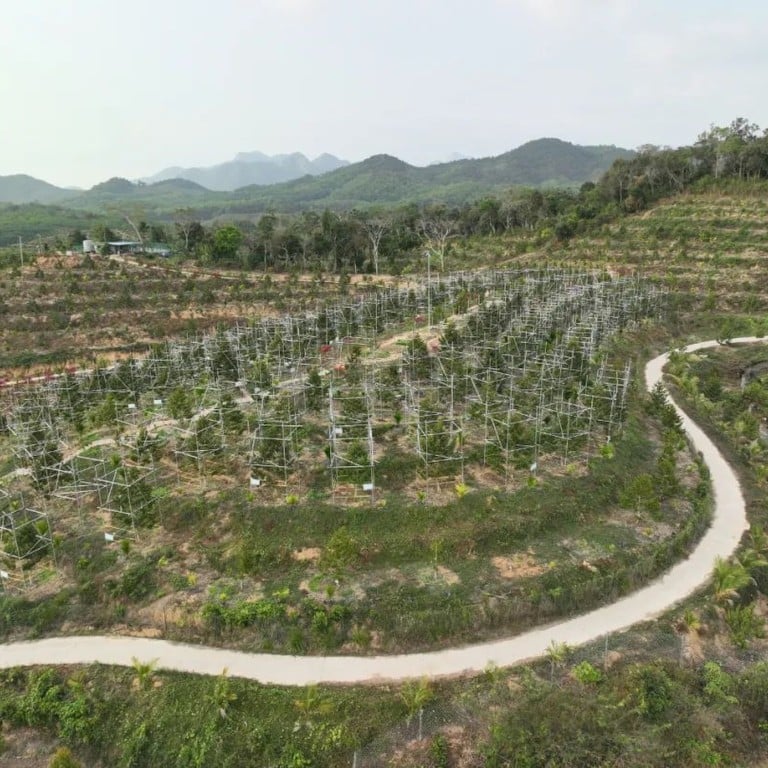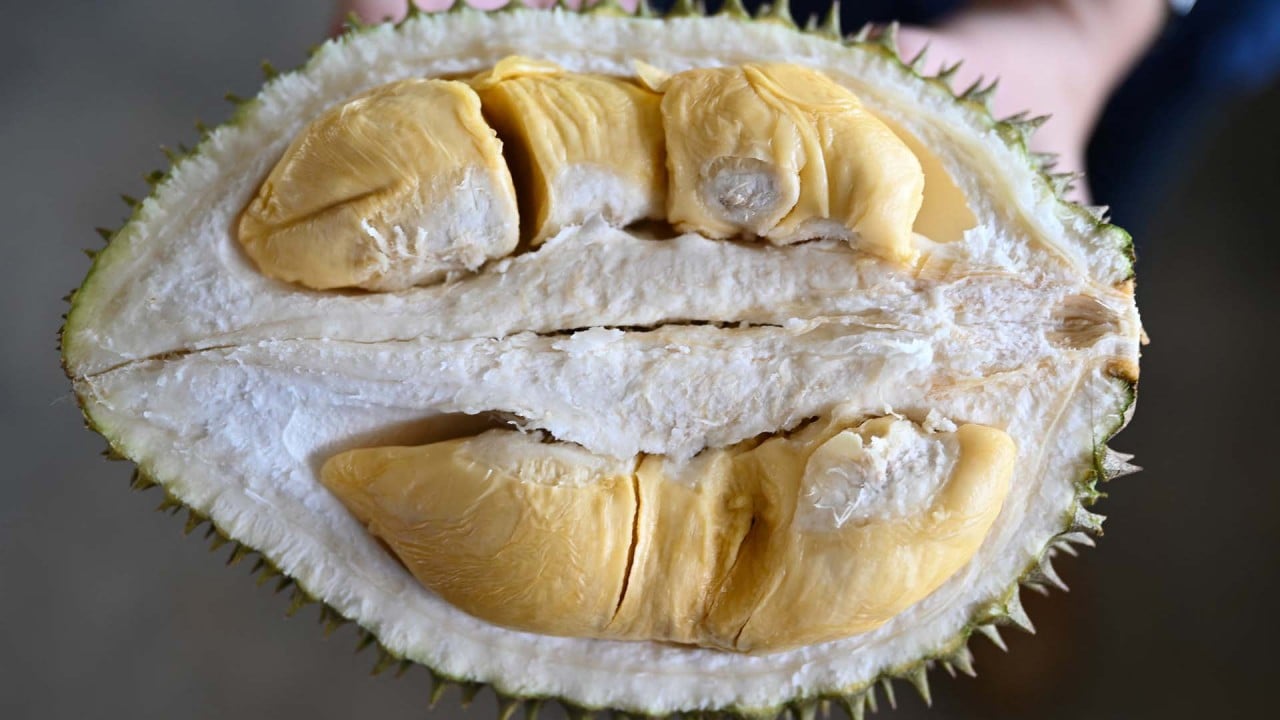
Durian from China? Hainan gears up for first harvest of Southeast Asia’s ‘king of fruits’
- About 2.45 million kilograms of durian produced on the tropical island of Hainan in southern China will go on sale in June
- Analysts say home-grown durian could reduce prices for the popular fruit in China, but it will not challenge Southeast Asian exports
China is gearing up for the harvest of its first domestic durian crop this summer after more than four years of cultivation, although it is not expected to challenge Southeast Asia’s stranglehold on sales of the pungent smelling fruit.
At the Durian Base in Sanya, 93.3 hectares (230.6 acres) of durian trees are bearing young fruit, with an estimated yield of 116.64 kilograms per hectare and an estimated output value of 6,665 yuan per hectare
Agricultural specialists from Southeast Asia helped plant the crop and Chinese specialists improved the imported seeds to better suit local conditions. The durian is expected to have a higher sugar level and growth cycle to adapt to market demand, according to CCTV.
Sanya is aiming to construct a durian industrial estate spanning 3,333 hectares within the next three to five years, which is anticipated to generate an output value of 5 billion yuan (US$727 million) by 2028.
Chinese are keen consumers of the spiky fruit with its uniquely potent smell from countries such as Thailand, Malaysia and Vietnam. But prices are usually high due to transport costs.
Analysts say Chinese-grown durian could reduce domestic prices, deepen “dual circulation” and boost international agricultural cooperation. But the key to its success is whether consumers will find it palatable.
“The key to mass-marketing domestic durian is about its ability to replicate the taste of those produced in their countries of origin,” according to Weng Ming, a researcher at the Institute of Rural Development under the Chinese Academy of Social Sciences.
Most tropical fruit in China is still imported and its taste difficult to replicate, according to Weng.
Is China’s vocational training fit for its advanced manufacturing ambitions?
“Figs, for example, are mainly produced in the Middle East and North Africa, and the taste of figs from Shandong, China, is nowhere near the taste of imports,” he said.
As a result, Weng said China’s foray into durian growing “definitely won’t affect the durian industry in Southeast Asia”.
But China’s advanced durian cultivation technology could open opportunities for international cooperation through agricultural technology exchange, he said.
“We need to see this breakthrough from a sense of cooperation rather than competition,” Weng said.
Durian is the No 1 imported fruit into China, reaching US$4.03 billion last year with a total import volume of 825,000 tonnes, according to data provided from the China Chamber of Commerce for Import and Export of Foodstuffs, Native Produce and Animal By-Products (CFNA).
Durian is most popular among young people, with over 60 per cent of the fruit in China being bought by consumers aged 16-35, according to data released by Jingdong Supermarket in November.
Its consumers are mainly concentrated in China’s first-tier cities, and netizens have coined the term “durian liberty” to describe its not-so-affordable price tag.
Escalating transport costs, coupled with the short storage period and increasing market demand in China, have resulted in the high price of durian, according to a report on the Chinese durian market published by huaon.com in November.
How China’s durian demand could leave bitter taste for some Asian countries
By 2026, China’s durian market will be worth close to 130 billion yuan in retail sales, the report said.
Aware of the huge demand, Hainan sought to capitalise on its climate for durian cultivation in the 1950s, however, immature growing techniques have held it back.
Thailand represented 96 per cent of China’s durian imports by value and 95 per cent of the total import volume in the past year, according to the (CFNA).
With the ratification of the Regional Comprehensive Economic Partnership in January 2022, preferential tariffs and faster customs clearance have attracted more Southeast Asian countries to export fruit to China.



.JPG?itok=aBbi0npI)